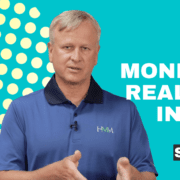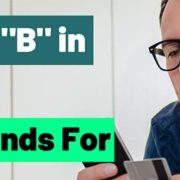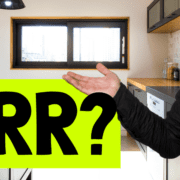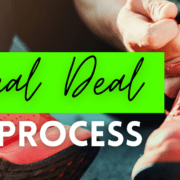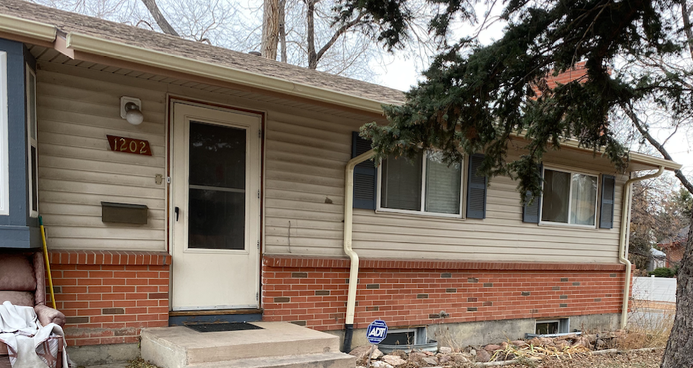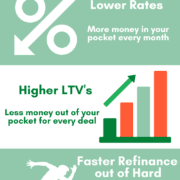No Money Down Investing? No Problem.
How do you buy investment properties with no money out of your pocket? Intro to Subject Tos.
Maybe you’re looking at interest rates and thinking, “I’m not sure I can put my money into real estate right now.” Maybe you’re new to investing, and you don’t yet have the money to put in. Or maybe you’ve got the money – but you’d much rather have it free than tied to properties.
In any case, every market has options for real estate investing with zero money down. For this upcoming market, our top 3 investment suggestions are: subject tos, BRRRR properties, and owner carries.
Here’s what you’ll need to know.
3 Ways to Invest in Real Estate with No Money Down
These are the most tried-and-true ways to invest in real estate with no money. Some of these methods will sound familiar – but they’ll have a twist to ensure your success in the market we’re about to enter.
Other methods might be unfamiliar to you. They’ve fallen out of popularity the last 15 years, but rising interest rates will bring back their usefulness.
1) BRRRR with No Money Out-of-Pocket
Buy, rehab, rent, refinance, repeat. That process becomes easier the better your deals are. And as we see more foreclosures happen in the near future, and more people are sitting on the market, you’ll have the chance for better deals.
To get BRRRR properties with no money out-of-pocket in this market, though, you’ll need a good deal. What makes a deal good? One of the best guidelines is the 75% Rule. As long as the property costs 75% or less of the ARV, you can get into that property with zero money down.
(Even following the 75% rule, you’ll need to qualify for a bank loan, so you’ll have to be sure your credit’s good.)
We’ve had a lot of success helping people with BRRRRs in down markets. Around 2010, we would often do ten properties every year for couples. They built portfolios with no money from their pockets.
2) Subject Tos with Zero Down
As properties get stuck in the market longer and interest rates rise, subject tos will become a great way to invest using no money.
A subject to is when you go on title, own the property, and take over mortgage payments – but leave the existing mortgage on the property, in the seller’s name.
What good does this do for you as the buyer?
- Loans on subject to properties were originated two or three years ago, with 2.5-3% interest rates. Much lower than if you were refinancing for yourself in the current market.
- You don’t have to refinance. It’s not on your credit, not based on your income, and you don’t have to go through underwriting.
- The loan is probably already a few years into amortization. So every payment becomes lower – all without you needing to qualify for anything.
- You can accumulate a large portfolio without the hassles of finding the money.
More on subject tos later in this article.
3) Owner Carry with No Money Down
An owner carry deal is somewhat similar to a subject to, where the buyer gets ownership of the house without taking out their own mortgage. But in an owner carry, the buyer doesn’t pay the property’s existing mortgage. Instead, the owner owns the home outright, so the buyer gives them mortgage payments directly.
Owner carries can be especially beneficial when you’re the seller. But an owner carry is also a potentially good option to invest without putting much, or any, money down.
Here’s an example of a recent owner carry deal we helped with:
A client was selling their parents’ property. They were planning to put the money in the bank and live off the interest.
Instead of settling for the 1% or 2% interest they’d make in the bank, we helped them with an owner carry. So they:
- Sold the property.
- Put a lien on the property so they held the mortgage.
- Received mortgage payments from the buyer at closer to a 4% or 5% interest rate.
You’ll probably have more luck finding subject tos than owner carries. Not many people own a house free and clear, or take over a property without a mortgage.
What are Subject To Real Estate Investment Strategies?
With a subject to, you buy a property subject to the seller leaving their mortgage on the property.
We talked about the benefits of subject tos – but how do you make it work? What are the right investment strategies to successfully get a subject to?
Subject To Strategy #1: Going Through a Proper Closing
First of all, still go through a proper closing on subject tos. You want to make sure the owner doesn’t have any other liens you don’t know about. When you take ownership, you become responsible for any existing liens on the property.
At the very least, get a title report to verify there are no liens. If you want, you can get title insurance – an extra cost but potentially worth it.
Subject To Strategy #2: Adding Your Name and Avoiding Problems with the Mortgage Company
With subject tos, some people may say you’re not allowed to take ownership and make someone else’s payments. They fear the lender may call the mortgage.
But we’ve never seen a lender ever call a mortgage in this situation.
The main reason is because the lender usually doesn’t break even with the loan until year three or four. When a lender originates the mortgage, they buy it, so it takes at least three years of payments to get their money back.
So as long as you pay on time and don’t cause friction, the mortgage company should have no problem with you taking over. They make money every time you make a payment, so they have no reason to call it off.
Subject To Strategy #3: Negotiating with the Seller
Sometimes you’ll have to negotiate with the seller for them to go through with a subject to.
Maybe they’ll need a payment of $5,000 – $15,000 to be able to leave. Maybe they’ll include terms that they’ll only keep the mortgage on for five more years.
It’s helpful to know when a seller is in a position that they’ll want a subject to. A subject to takes place because the seller, for whatever reason, needs to sell the house but can’t. They don’t want to be stuck with the property, and they don’t want a foreclosure or missing payments to ruin their credit.
If you make their payments for around 12 months, they can usually qualify for another mortgage on another property without this one hurting them.
For more details on real estate investment strategies and setting up subject to deals, reach out to us at HardMoneyMike.com. We have plenty of experience, and we want to help you build a real estate portfolio without worrying about your credit or income.
How Do You Make Sure a Subject To Is a Good Real Estate Investment?
Not all subject tos and owner carries are created equal. Here are some tips on knowing when a property will be a good investment for you.
Good Location
In the upcoming market, don’t settle for properties in bad locations. A good real estate investment is a deal in a good area.
As more foreclosures happen, more REITs and investment companies will buy large amounts of rental properties, creating new “rental areas.” Your target tenants might want to avoid those areas. You might have more success buying in “better” areas.
Know Your Goals
When you go into a subject to deal, you’ll need to know the terms that will make the investment worth it to you, along with the goals you’d have for the property.
How long do you want to carry this property? Are those terms your seller can agree to? What does your seller require?
What’s your plan? What are your options for this property? Will you want to rent out the property, or look at lease to own or contract for deed options?
Lease to purchase and contract for deed deals are worth considering. Those buyers will give you a down payment, which is a lump sum you can use to fund the property’s fix-ups, put in a reserve, or just keep in your pocket.
Subject Tos are a Good Real Estate Investment, Even with High Loan-to-Value Ratios
Subject tos will have a high loan-to-value ratio. It’s often around 90%, but we’ve seen subject to properties with over 100% loan-to-value.
Naturally, this could give you pause, but high loan-to-value properties are okay for subject to deals. They’re still good real estate investments. As a subject to buyer, you know:
- There’s no money out of your pocket.
- Rent will cover your payments.
- The loan will amortize down.
- Over time, you can own the property free and clear, and when the market’s up, you could sell for straight profit.
- You can create wealth without even using your own credit.
Subject tos are a good real estate investment if you have no experience or money – or if you do!
How Do You Create Wealth with Subject Tos in this Market?
Once you know how to set up a subject to deal correctly, with terms that benefit you and ensure your safety as an investor… How do you make it a system that not only generates cash flow, but creates generational wealth in real estate investing?
Going Big with Zero Down Subject Tos
Volume is how you make your money. Subject tos can be easy and relatively passive, so it’s possible to stretch yourself from five to ten properties to 50 to 100.
But to go for volume, you’ll have to be less picky with the amount of money you put in a deal.
You might have to bring in some money to help the seller move. You may have to fix up a few things in the property. Or you could need to carry the payments for a few months while you find a good renter.
Using OPM in Subject Tos
The number one investment strategy we recommend here is to bring in an OPM partner. This will be a person who’s willing to put in $10,000 to $50,000 in exchange for a portion of rent.
This partnership will allow you to expand quickly. Your partner gets a 5-6% return on their money, there’s still no money down for you, and you get the speed and flexibility that cash gives a subject to.
We have a history of helping people with this part of the process. You can get the start-up cash that’s holding you back from creating wealth by investing in real estate. Reach out at HardMoneyMike.com.
What’s an Example of a Subject To?
Lastly, here’s a subject to example deal – what the process should look like from beginning to end.
Why the Seller Wants a Subject To
A subject to starts with a seller who has a problem. Either they can’t make payments on their property, or they need to move ASAP (got a new job across the country, etc). They can’t sell the property as fast as they need to; or maybe they could sell, but paying 6% realtor fees and 2% closing would leave them upside down.
The seller would rather have someone else take over the property and make the loan’s payments. This saves the seller’s credit and helps them avoid foreclosure.
A subject to helps a seller get out of a messy situation.
Closing the Sale
Once you find a seller, you’ll need to set up your terms. You’ll go through a typical closing, so you can get a title report and check for any existing liens.
You’re responsible for any liens on the property. They may have a first, second, or judgment lien that would become your responsibility. You don’t want to get stuck with a property whose value is way undermarket.
Payment Example for Subject Tos
After closing, you’ll need to set up the payment system to the seller’s mortgage company. Many people use a third-party escrow company. They make the payments to the escrow company, and that company makes the actual payments to the mortgage lender.
A seller’s credit is on the line when they agree to a subject to deal. If you offer to use a third-party company to make the payments, that could give the seller the reassurance they need to go through with a deal.
The escrow company may cost five to twenty-five dollars per month, but it’s a small price to get in on an existing loan with 2.5% – 3% interest.
Where Next?
Once you’ve acquired a subject to property, all you need is to find either:
- A renter.
- A property management company to help rent.
- A rent to own or lease purchase buyer.
And then? …Make money, and repeat the process.
Subject tos are clean, easy, and repeatable.
If you want to find out if creating a large real estate portfolio using subject tos is the right path for you, reach out to us at HardMoneyMike.com.
For information on lending options for potential properties, download the free resource here.
To learn more about real estate investment with zero money down, watch the videos here.
Happy Investing.

